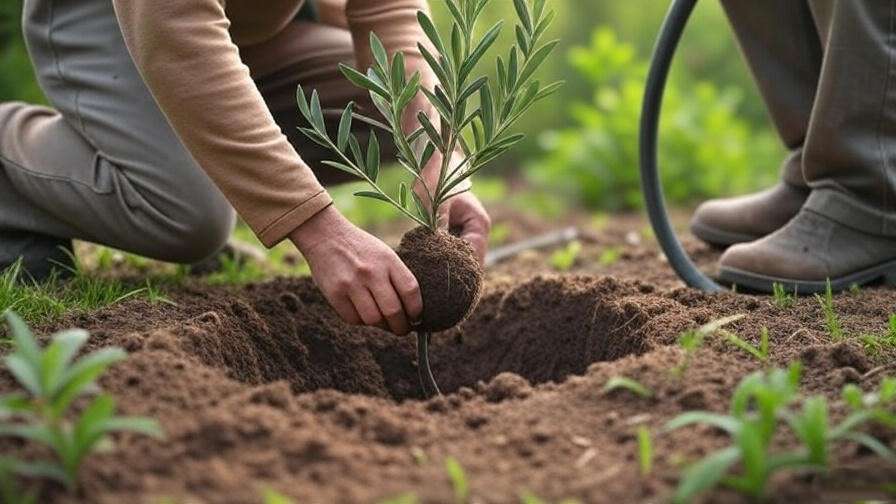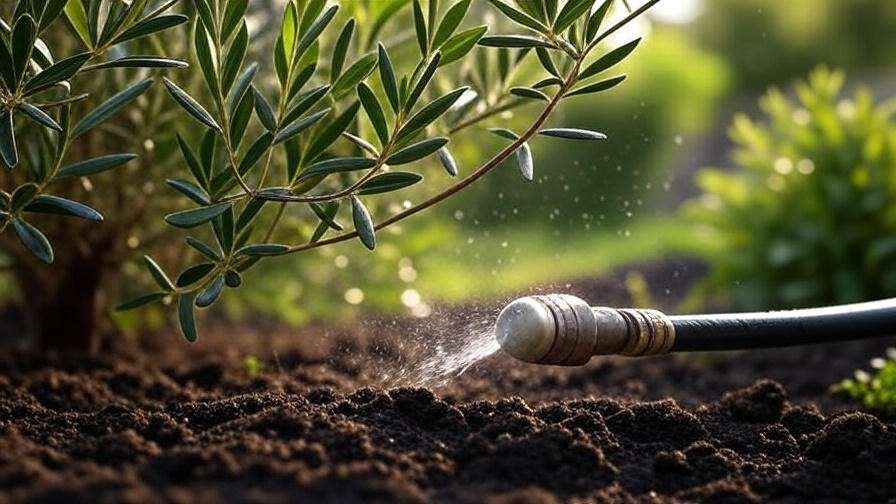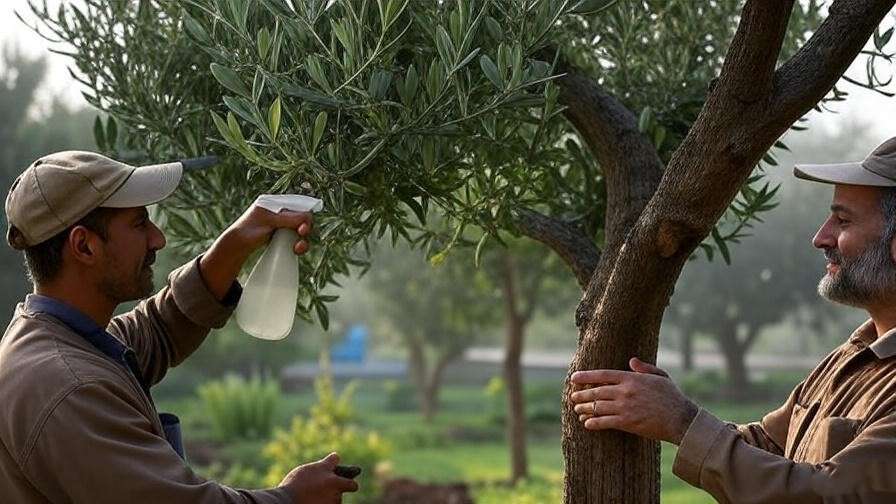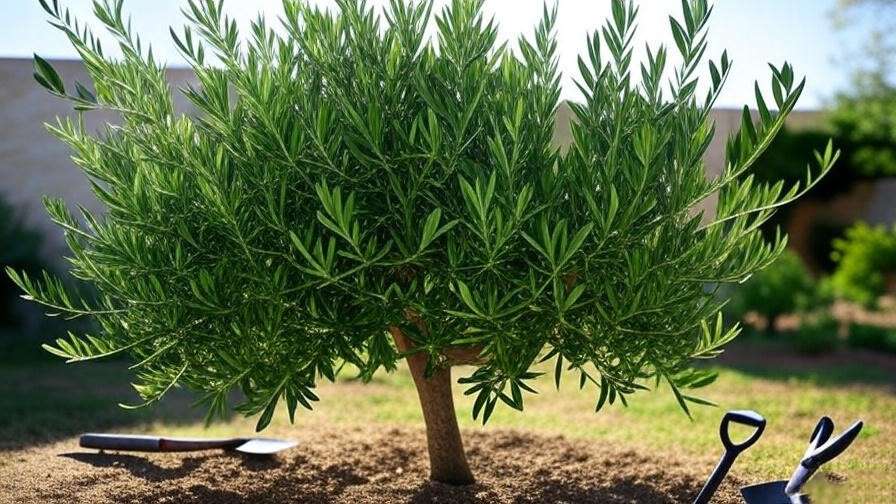Imagine transforming your backyard into a Mediterranean paradise with the lush, glossy foliage of a black olive tree! 🌿 This stunning ornamental tree, known scientifically as Bucida buceras, is a favorite among gardeners for its dense canopy, elegant silhouette, and low-maintenance charm. Whether you’re a seasoned horticulturist or a beginner looking to elevate your garden, mastering black olive tree care is the key to a thriving landscape. In this comprehensive guide, we’ll share seven expert tips to help you grow a healthy, vibrant black olive tree that becomes the centerpiece of your outdoor space. Backed by over a decade of horticultural experience and insights from trusted sources like the University of Florida IFAS Extension, this article will equip you with everything you need to succeed. 🌴
Understanding the Black Olive Tree 🌴
What is a Black Olive Tree?
Despite its name, the black olive tree (Bucida buceras) is not related to the edible olive tree (Olea europaea). Native to the Caribbean, Central America, and parts of South America, this evergreen beauty is prized for its ornamental qualities. Its glossy, dark green leaves and dense, spreading canopy make it a standout in warm-climate gardens. The black olive tree can grow 30-40 feet tall and 20-30 feet wide, offering ample shade and a tropical aesthetic. Its small, non-edible fruits (often mistaken for olives) add to its unique appeal.
Why Choose a Black Olive Tree for Your Garden?
The black olive tree is a versatile addition to any landscape. Its lush foliage creates a natural privacy screen, while its shade cools patios and yards. Environmentally, it purifies the air and provides habitat for birds, making it a sustainable choice. Gardeners love its adaptability to various soil types and its drought tolerance once established. Whether you’re designing a Mediterranean-style garden or need a focal point for your lawn, the black olive tree delivers both beauty and functionality.
Tip 1: Selecting the Perfect Location ☀️
Choosing the right spot is critical for your black olive tree’s success. These trees thrive in full sun, requiring at least 6-8 hours of direct sunlight daily to promote healthy growth. Select a location with well-draining soil, ideally with a pH between 6.0 and 7.5 (slightly acidic to neutral). Avoid low-lying areas where water pools, as poor drainage can lead to root rot. Since mature black olive trees can reach 40 feet in height and 30 feet in width, ensure ample space to accommodate their size without crowding nearby structures or plants. According to the USDA, black olive trees flourish in hardiness zones 9b-11, making them ideal for warm climates like Florida, Texas, or Southern California.
Expert Insight: Test your soil’s drainage by digging a 12-inch hole, filling it with water, and observing how quickly it drains. If it takes longer than 12 hours, consider amending the soil or choosing a different location.

Tip 2: Planting Your Black Olive Tree Correctly 🌱
When to Plant
Timing is everything when planting a black olive tree. The best seasons are spring or early fall, when mild temperatures support root establishment. Avoid planting during extreme heat or cold, as these conditions can stress the tree and increase the risk of transplant shock.
Step-by-Step Planting Guide
- Dig the Hole: Create a planting hole twice as wide and the same depth as the tree’s root ball. This allows roots to spread easily.
- Prepare the Soil: Mix native soil with organic matter like compost or aged manure to boost nutrients and improve drainage.
- Plant the Tree: Place the tree in the hole, ensuring the root collar (where the trunk meets the roots) is level with the ground. Backfill with soil, gently tamping to remove air pockets.
- Water Thoroughly: Water deeply immediately after planting to settle the soil and hydrate the roots.
- Mulch: Apply a 2-3 inch layer of organic mulch (e.g., wood chips) around the base, keeping it 2 inches away from the trunk to prevent rot.

Tip 3: Watering Wisely 💧
Proper watering is essential, especially during the first year when your black olive tree is establishing its roots. Water young trees 1-2 times per week, providing about 1 inch of water each time. Once established, black olive trees are drought-tolerant and may only need supplemental watering during prolonged dry spells. Overwatering can cause yellowing leaves or root rot, while underwatering may lead to wilting or leaf drop. Check soil moisture by digging 2-3 inches down; if it’s dry, it’s time to water.
Pro Tip: Use a soaker hose or drip irrigation system to deliver water directly to the root zone, promoting deep root growth and conserving water.

Tip 4: Fertilizing for Optimal Growth 🌿
Fertilizing your black olive tree ensures it has the nutrients needed for vigorous growth. Apply a balanced, slow-release fertilizer (e.g., 10-10-10) in spring and late summer during the first 2-3 years. For mature trees, fertilize once annually in spring. Avoid over-fertilizing, as excessive nitrogen can cause leafy growth at the expense of root strength or lead to leaf burn. According to the University of Florida IFAS Extension, black olive trees benefit from micronutrients like magnesium and iron, especially in nutrient-poor soils.
Expert Insight: Conduct a soil test through a local extension service to identify specific nutrient deficiencies and tailor your fertilizer accordingly.

Tip 5: Pruning and Shaping Your Black Olive Tree ✂️
When and Why to Prune
Pruning is essential to maintain the health and aesthetics of your black olive tree. The best time to prune is late winter or early spring, just before the tree begins its new growth cycle. This timing minimizes stress and allows the tree to heal quickly. Pruning serves multiple purposes: removing dead or damaged branches, improving air circulation to prevent fungal issues, and shaping the tree to enhance its ornamental appeal. Regular pruning also helps control the tree’s size, making it a better fit for smaller gardens or urban landscapes.
Pruning Techniques
- Tools: Use clean, sharp pruning shears for small branches and loppers or a pruning saw for larger ones. Sterilize tools with rubbing alcohol to prevent disease spread.
- How to Prune: Start by removing dead, damaged, or crossing branches that could rub and create wounds. Cut at a 45-degree angle just above a bud or lateral branch to encourage healthy regrowth.
- Shaping Tips: Aim to preserve the black olive tree’s natural, rounded canopy for maximum aesthetic impact. Avoid over-pruning, as this can stress the tree and reduce shade production.
- Safety Tip: Wear gloves and protective eyewear to avoid injury from falling debris or sharp branches. For large branches, consider hiring a certified arborist to ensure safety and precision.

Tip 6: Managing Pests and Diseases 🐞
Common Pests
Black olive trees are relatively pest-resistant but can occasionally attract scale insects, aphids, and spider mites. Scale insects appear as small, waxy bumps on stems and leaves, while aphids cluster on new growth, sucking sap and causing leaf curl. Spider mites, identifiable by fine webbing and stippled leaves, thrive in hot, dry conditions. Regular inspection is key to early detection. Maintain tree health through proper watering and fertilization to reduce pest susceptibility.
- Prevention: Spray foliage with a strong water jet to dislodge pests or introduce natural predators like ladybugs.
- Treatment: Use insecticidal soap or neem oil for eco-friendly control. Apply in the early morning or late evening to avoid leaf burn and protect beneficial insects.

Common Diseases
Fungal issues like root rot and leaf spot can affect black olive trees, especially in poorly drained soils or humid conditions. Root rot, caused by overwatering or compacted soil, leads to wilting and yellowing leaves. Leaf spot appears as dark, water-soaked spots on leaves, potentially causing defoliation.
- Prevention: Ensure proper drainage by planting in well-draining soil and avoiding overhead watering. Space trees adequately to promote air circulation.
- Treatment: Remove affected leaves and apply a copper-based fungicide for leaf spot. For root rot, improve drainage and reduce watering frequency. Severely affected trees may require professional assessment.
Tip 7: Protecting Your Black Olive Tree Year-Round ❄️☀️
Black olive trees are hardy in warm climates but need seasonal care to thrive year-round. In winter, protect young trees in cooler zones (USDA 9b) by applying a 2-3 inch layer of organic mulch around the base to insulate roots. In summer, monitor for drought stress and provide deep watering during prolonged dry spells. For young trees in windy areas, use stakes to prevent uprooting during storms, ensuring stakes are loose enough to allow natural movement.
- Winter Care: In borderline zones, wrap trunks with burlap to shield against frost. Avoid fertilizing in late fall to prevent tender growth vulnerable to cold.
- Summer Care: Check soil moisture weekly during heatwaves, watering deeply if the top 2 inches are dry.
- Storm Protection: After storms, inspect for broken branches or leaning, addressing damage promptly to prevent pest or disease entry.
Pro Tip: Install a rain gauge to monitor precipitation and adjust watering schedules, ensuring your tree gets consistent moisture without overwatering.

Troubleshooting Common Black Olive Tree Problems 🛠️
Even with proper care, black olive trees may face challenges. Here are common issues and their solutions:
- Leaf Drop: Caused by overwatering, nutrient deficiency, or environmental stress (e.g., sudden temperature changes). Check soil moisture and adjust watering. Apply a balanced fertilizer if nutrient deficiency is suspected.
- Slow Growth: Often due to poor soil quality, insufficient sunlight, or compacted roots. Conduct a soil test to assess nutrient levels and amend as needed. Ensure the tree receives full sun.
- Yellowing Leaves: Indicates overwatering, poor drainage, or nutrient imbalance (e.g., iron deficiency). Improve drainage and test soil pH to confirm nutrient availability.
Expert Insight: A soil test from a local extension service can pinpoint deficiencies, allowing you to apply targeted amendments like iron chelate for chlorosis.
Enhancing Your Garden with Black Olive Trees 🌳
Black olive trees are versatile for landscaping. Pair them with drought-tolerant companions like lavender, rosemary, or agave to create a cohesive Mediterranean-style garden. Use them as a focal point in a lawn, a shade provider over a patio, or a natural privacy screen along property lines. Their dense canopy complements low-growing shrubs and colorful perennials, adding depth to your landscape.
Case Study: In a coastal Florida garden, a homeowner planted a black olive tree as a centerpiece, surrounding it with native wildflowers and ornamental grasses. Within three years, the tree provided ample shade, reduced lawn maintenance, and attracted local wildlife, enhancing the garden’s ecosystem.
Frequently Asked Questions (FAQs) ❓
- Q1: Is the black olive tree related to the edible olive tree?
No, the black olive tree (Bucida buceras) is not related to the edible olive tree (Olea europaea). Its fruits are non-edible and primarily ornamental. - Q2: Can I grow a black olive tree in a container?
Yes, young trees can be grown in large containers with well-draining soil, but they may require frequent repotting and eventually need to be planted in the ground due to their size. - Q3: How fast does a black olive tree grow?
Black olive trees grow moderately, adding 1-2 feet per year under optimal conditions. - Q4: Are black olive trees messy?
They can drop small fruits and leaves, but regular raking and pruning minimize mess. Their benefits often outweigh this minor upkeep. - Q5: Can black olive trees survive cold winters?
They thrive in USDA zones 9b-11 but may need protection (e.g., mulch or burlap wraps) in cooler areas to survive frost.
Conclusion
Growing a thriving black olive tree is within your reach with these seven essential tips: selecting the right location, planting correctly, watering wisely, fertilizing appropriately, pruning strategically, managing pests and diseases, and providing year-round protection. By following this expert-backed guide, you’ll cultivate a stunning, low-maintenance tree that enhances your garden’s beauty and functionality. Start your black olive tree journey today and share your progress in the comments! 🌳 For more plant care tips, explore our guides on Mediterranean landscaping or drought-tolerant trees.













